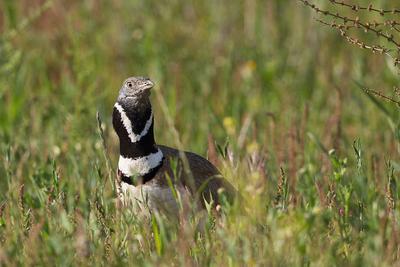Rising global temperatures are impacting the ability of grassland birds to mate, forcing some males to choose between high-energy mating displays or seeking shelter and saving energy to protect themselves from the heat, according to new research published in the journal PLOS ONE.
The study, led by scientists in the United Kingdom, Kenya, Portugal, Spain, and Brazil, examined mating behavior in little bustards, a threatened grassland bird, in the Iberian Peninsula, an area of Europe that has experienced some of the most drastic increases in temperatures and drought due to climate change.
Little bustards, like many bird species, participate in a breeding gathering known as a “lek,” where males try to attract females by standing upright, puffing up their necks, and making a snorting sound. The researchers found that the higher temperatures climbed, the less male little bustards performed their mating displays. If warming trends continue, the species’ mating display activity could decline by as much as 10 percent by 2100. Coupled with extensive habitat loss, scientists warned this temperature-driven decline could cause local or region extinctions.
“Many people are familiar with the impacts of global warming on wildlife through droughts, storms or wildfires, as well as earlier migration with warming springs,” Paul Dolman, an ecologist at the University of East Anglia in the UK and co-author of the new study, said in a statement. “But climate change affects species in many other subtle ways that may cause unexpected changes.
“Little bustards living in the Iberian Peninsula are already exposed to some of the highest temperatures within their species range. They are one of many bird and mammal species that have an extravagant, energetically demanding display ritual. Our findings highlight the need for further work to understand the mechanisms that underlie responses to climate change and to assess implications these changes may have at a population level.”



